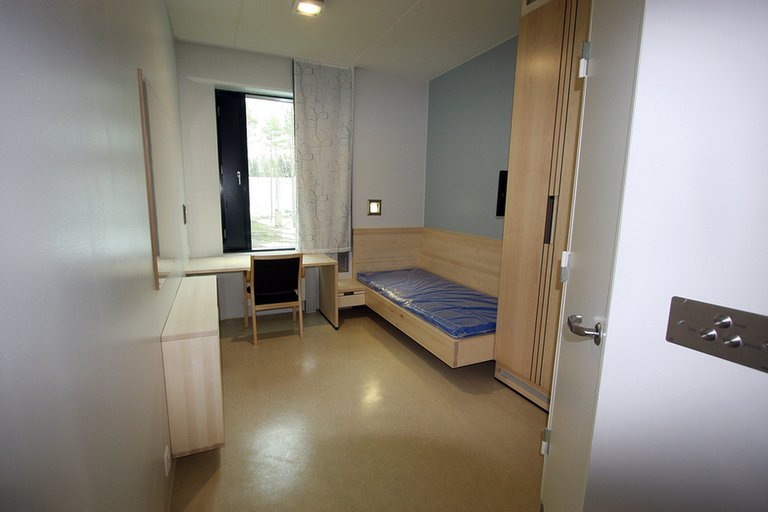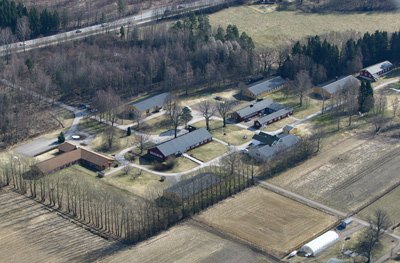Structure of the prison system in Norway
Norway is a long country, with many fjords and a scattered and low population. Combined with an intention to let the offender serve his sentence close to his social network and to relevant service providers, Norway has a relatively large numbers of small prisons.
The biggest prison in Norway is Oslo prison, with around 400 inmates.
One can mainly serve a prison sentence of four different security level. Extra high security level, high-security level, low security level and transitional housing. It is also possible to serve time with electronic control and in institution (psychiatric or re-habilitation, if one considered suitable for this)
Extra high security level
Extra High Security Level was introduced on March 1st 2002. In total it has been used less than 15 times. The shortest committal is one month; the longest committal is 1 year and nine months (excluding the man responsible for the attacks on 22 July 2011, who is still serving prison on extra high security level.)

Photo: Kjetil Ree (2012). Picture of Ila Detention and Security Prison.
High security level
Almost two-thirds of the prisoners are placed in high-security prison. I myself worked partly in a high-security prison and partly in a halfway house. Therefore I want to tell most about these two.
High security prisons features brick or a high fence around the prison perimeter. All doors are essentially locked. Prisons are normally divided into different departments; each department has its own communal surface, with kitchen. Prisoners convicted are obliged to work / study. When they do not participate in recreational activities, along with employees, or eat food, they are locked up in their cells. Kitchens are fully equipped with sharp objects. Some inmates do not reside in the common areas, as they pose a danger to themselves or others. They are then usually moved to the custody department, which has no common area. However, this is not something that happened very often where I worked. This is also something the staff is reviewing continuously, to ensure that the prisoners have access to common areas as soon as it is considered safely.
Normally each inmate has his own cell, but due to few prison places inmates must occasionally divide cells in pairs. Most cells have their own toilet, but some have to share toilets with others at the hallway. They must then be locked out of the officers to go to the bathroom, which is not ideal. Where I worked everyone had toilet and sink on the cell (and TV). It is limited how many personal possessions the prisoners get to have at the cell. Officers also often control the cells.
Norwegian prisons also have security cells, which is used when needed. Where I was working, these cells very rarely used, only a handful of times a year, and then usually by the same people, with mental challenges.
There are also divisions specializing in different areas. For example, substance-abuse-departments, where prisoners receive extra attention and conversations with psychologists, partly to find out why they are taking drugs, and help and motivate them on the right path. Inmates must apply in these departments, and appear motivated for change. They talk about their drug problems in groups, learn how to make good and healthy food, wash and clean etc. There are similar divisions among others for pedophiles.
Prisoners also have access to doctors, nurses, priest, library and activity leader inside the prison.

Photo: Mona Sande. Prison cell in Halden prison, also named the 'luxury' prison.

Photo: Terje Bringedal, VG. Prison cell in Oslo prison, the oldest prison in Norway.
Low-security level
Low-security prisons doesn´t have as many safety measures. Normally there is a fence around the prison. The prison is locked during night, but the prisoners are not locked in cells. They often have to share houses / huts / rooms with several inmates. Bastøy prison is an example of a low security prison.

Photo: By Tom A. Paulsen. Picture of Berg fengsel
Half way houses
If it is considered appropriate to promote a positive development and to prevent further crimes, prisoners can be transferred from prison with a high or lower security to halfway house when part of the sentence is completed.
Half way houses is a step in the gradual reintegration. Prisoners must have a job, or other employment measures to stay in a half-way-house. Inmates may obtain a job themselves, or get help from the prison / welfare system. They practice their need for housing, employment and social training, before reentering into society.
Freewheel and leaves will also be part of the social training and planning of release. Most have more leaves and lodging to a permanent home, before being released on parole or released on completion time.
Mandatory psychiatric treatment
Some people are also found to have been unaccountable for their deeds because of serious psychiatric disturbances that led to them not being aware of committing a crime in the moment of their actions. These people may be sentenced to mandatory psychiatric treatment, instead of prison.
Unfortunately it sits many mentally very sick people in Norwegian prisons, which was considered sane moment in deed, but which in my opinion should not have been in prison, but rather been in psychiatric institutions.
Problem areas
The Norwegian government are doing something right with our prison system, but we also have some challenges.
Prisoners with psychiatric problems and / or drug abuse
The large number of prisoners with psychiatric or other mental health problems, combined with addiction problems is one of them. The correctional services don´t always have the resources and competency to manage these problems. Some of the prisoners are too sick to be in prison, but they are considered to sane to be sent to mandatory psychiatric treatment.
In my opinion these prisoners should have received more professional attention from specialists, and more of them should have been sent to psychiatric departments etc. to get the help they need. Today the opportunity the correctional services has to decide this is low, at least in cases where the prisoner also emerging as a security risk. Therefore some prisoners are being seated in their cells without sufficient resources, and they are not getting better. Much time alone in the cells can cause insulation damage, which damages both the individual concerned and society to address them when the sentence has expired. Although this as a whole represents a small group of inmates, it is important to focus on them.
Drug flow
There is little control on the flow of drugs, especially in low-security prisons. Some inmates are trying to stay clean, but are being pressed / encouraged / tempted start using drugs again. If someone is caught for drug use, they are normally sent to higher security, without that helping on the real issue. I believe some of the issue is an insufficient numbers of officers to maintain control, search for drugs and test for drugs. The prisoners then know that the chance of being caught is small.
Women
Around 5,8 % of prisoners in Norway are females. There are very few female atonement sites in Norway. Witch means that they unfortunately don’t have the same offer as men in many areas, especially when it comes to employment inside the prison. Further, it has lately been very full on lower security, which means that some female inmates how should have atoned in lower security has been transferred to higher security.
Foreign prisoners
35,2 % of prisoners in Norway are foreigners, and the numbers has been growing rapidly the past years. This presents a number of challenges for the prison officers as to language, culture and religion. A relatively large part of foreingers consists of more or less organized crime. It is more likely that these criminals are responsible for security problems, recruitment etc. They are also much harder or impossible to rehabilitate, because most of them will be deported to their home country after (or while) serving their sentence.
They don't deserve to have luxury cells or I suppose its something for them to behave themselves. Looks a big place.
This prison is much more better than prisons that I have heard of from other sources. Keep sharing the quality contents @evak
Thanks :)
Interesting post. Thank you.
Thanks a lot :)
That prison is definitely a luxury, if you saw those of Venezuela will be surprised how terrible it is humane treatment in prison by the police and the prisoners themselves.
Watch a report on the Prison El Dorado in Bolivar State
some prison has horrific prison conditions , unfortunately :-/
Well let's not forget that prisoners are humans too, and that 90% of prisoners get there for victimless crimes.
So rather than improving prisons, maybe they should legalize drugs and reduce the amount of prisoners.
Congratulations @evak! You received a personal award!
You can view your badges on your Steem Board and compare to others on the Steem Ranking
Vote for @Steemitboard as a witness to get one more award and increased upvotes!